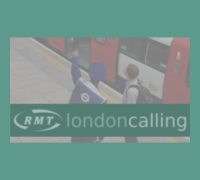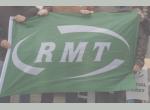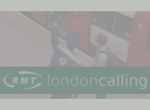Similar topics:
Attached documents
View the poster by clicking the image or hitting 'download attachment' below.
It has been raised by the RMT Union that handing over the control of signalling equipment or control to an unqualified member of staff who doesn’t have the right paperwork, knowledge or regular work of signalling in that area can put the safety of the railway in jeopardy!
When it comes to refreshers or defining competence of any individual who claims to be qualified, this is not covered by any agreement as it is not the trainer that signs the individual off! That's the SCAC's job (in conventional cabins and the SCC). The individual would need to be observed by a CMS assessor who is themselves competent in the activity they are assessing. So in the majority of cases this would either have to be a SCAC, SCSM or Signaller who holds the relevant NVQ's and LU registration for assessing.
For refreshers any manager should have done enough to maintain their ongoing competence and
familiarity with the task they are undertaking. One thing to remember is the LU Cat 1 Standard for Signal Cabin/Control Room operations. You must ensure you are relieved by a competent person. This would require the signaller to challenge the individual to see their Safety Critical Licence and current CMS Log Book. Both must be valid and in date, particular attention should be paid to the date of their last competency assessment in the Cabin.
If none of the above criteria can be met, the signaller should politely decline being taken off by this individual and ask them to leave the Signal Cabin. The Signaller should then report the facts to the Service Manager. Should there be an insistence by the individual or they refuse to leave the cabin, then consideration should be given to summoning the assistance of the BT Police. We would suggest manual signalled moves in the area of control are ceased should the individual refuse to exit the cabin, as this scenario is likely to distract the signaller from undertaking their duties safely.
PLUS
“The Management of Health and Safety at Work Regulations 1992 state that employees
have the right to stop work and proceed to a place of safety “if exposed to serious, imminent
and unavoidable danger”. The Trade Union Reform and Employment Rights Act 1993,
confirmed by the Employment Rights Act 1996, gives protection to union health and safety
representatives, and ordinary workers, to raise safety concerns and act on them. It made it
illegal for employers to victimize workers who:
- Take appropriate steps to protect themselves and others (customers) when
facing serious and imminent danger.”- Is a manager that works safety critical signalling equipment ONLY once every six months a safe person to leave the control of the railway in!!
Those who hold a trainers position can at any time refuse to take a trainee!
You will however have to relinquish your 4.35% enhancement. But what’s this worth compared to the safety
of your colleagues and customers. It is infact less than this years pay increase alone. You would have to train for 23 YEARS to make the equivalent of a year’s salary from the small amount given.
23 Years or Your Job?
Will you have a job in 23 years if you train this person?
- 3167 reads






